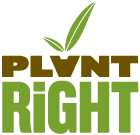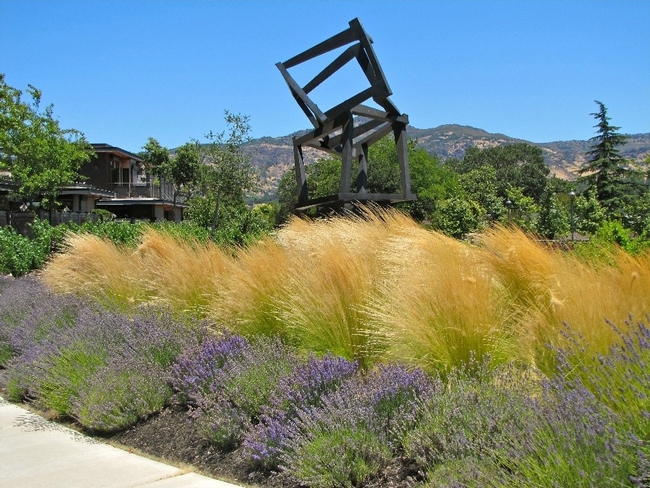I saw Elvis today.

PlantRight defines “actionable awareness” as what happens when individuals and businesses are made aware of an opportunity to be part of the solution to California's costly (economically and environmentally) invasive garden plant problem, and make a conscious decision to act. Invasive plants (despite the fact that many are deceptively beautiful and drought resistant) outcompete native plants, alter soil chemistry, increase wildfire risk, clog our waterways and can severely compromise agricultural yields and real estate value. If that weren't enough, invasive species are the second greatest threat to biodiversity after human development.
Awareness of these facts alone will not fix any of these issues; however, add action to the mix and you have a proven formula for problem solving. PlantRight's idea of problem solving is collaborating with the industry to voluntarily phase invasive plants out of the supply chain and replace them with high-quality (i.e. non-invasive) plants. Voila! Together we prevent new invasive garden plants from wreaking havoc on our wild lands and taxpayer wallets.

The fact that 50% of California's invasive plants are of horticultural origin (Bell et al. 2007) is a source of both conversation and dismay. Yet from PlantRight's perspective this 50% is a great source of optimism because it's proof of a huge opportunity the nursery industry can play in preventing future invasive plant introductions. In past decades ornamental plant breeders and growers had little or no ability to predict a plant's invasive risk in a given region, and most invasions were well-intentioned accidents. Lucky for us we finally have science-based plant risk evaluation tools to prevent new invasive plant introductions. Not so lucky for us is that popular plants travel, and a delightful Dr. Jekyll plant in one region, may become a hideous Mr. Hyde plant and landscape transformer in a different region. It's about the right plant in the right place, but just where to begin, if we're to turn this talk into actionable awareness?
In the beginning there was lots of conversation and lots of listening sessions that Sustainable Conservation conducted with a diverse group of nursery industry stakeholders, from large ornamental growers, retail nurseries, plant scientists, trade associations and government agencies. University of California Agriculture and Natural Resources (UC ANR) has been part of this group from the start, providing academic expertise on weeds and calculating their risk. This group's official moniker is “California Horticultural Invasive Prevention,” but we prefer Cal-HIP.
With a couple years of listening and learning under our belts, and funding from Sustainable Conservation, the PlantRight program was ready for action: action engaging the nursery industry in voluntarily phasing our invasive ornamental plants and promoting, in their place, non-invasive alternatives.
Our first order of business was to measure the scope of the problem and establish a baseline. Working closely with plant science experts to identify the most problematic invasive ornamental plants, and industry experts to identify non-invasive alternatives, we created our first PlantRight plant list. If you can measure it you can manage it, we like to say - to do this, we rely on an annual Spring Nursery Survey. Each spring, partner with UC Master Gardener volunteers to survey more than 200 nurseries and garden centers around the state, and in the process track the retail market for invasive garden plants in California.
Along with informing PlantRight's program strategy, the annual survey allows us to keep PlantRight's plant list manageable and up to date – we add new invaders and retire those that are largely phased out of the trade. It is our program's calling card, and the starting point for conversations with prospective partners and skeptics, alike. It has earned the enthusiastic support of California Certified Nursery Professionals (CCNPro), SaveOurWater, and more.
A Little Less Fight, a Little More Spark
Buying non-invasive means many things, including protecting native species, being good stewards of our beautiful open spaces and waterways, being fiscally responsible and preventing additional taxpayer dollars going to avoidable invasive plant eradication efforts. Buying non-invasive plants is casting a vote for the kind of world you want to live in.
So, why on earth do people buy invasive plants in the first place? (Hint: One big reason has to do with what happens when you turn off the lights). Yep, people who purchased invasive plants were in the dark – they did not know.
In 2013, we learned that the primary drivers behind consumer purchases of invasive plants are: 1) aesthetics – it looks good; and, 2) there was no information on the plant indicating “invasive.” In other words the majority of invasive plant purchases (by consumers) are impulse purchases and would not have occurred had the plant been properly identified as “invasive.”

Come On, Come On…Come On, Come On
Ready to channel your inner Elvis and tackle invasive garden plant problems in ways that make economic sense? (Of course you are!) Here are a few resources to empower more action in your community.
- Share this article
- Sign up for the Spring Nursery Survey Webinar and Training
- View our Plant List at PlantRight.org
- Invasive Plant IQ Test
- View our 2016 Invasive Plants Webinar
- Little Less Conversation, Little More Action (Please) - Video
So this National Invasive Species Awareness Week we encourage you to crank up that volume and bust a move with the PlantRight community (blue suede shoes optional), knowing that YOU are driving actionable awareness…this week, this month and in the years ahead.
Thank you, thankyouverymuch.